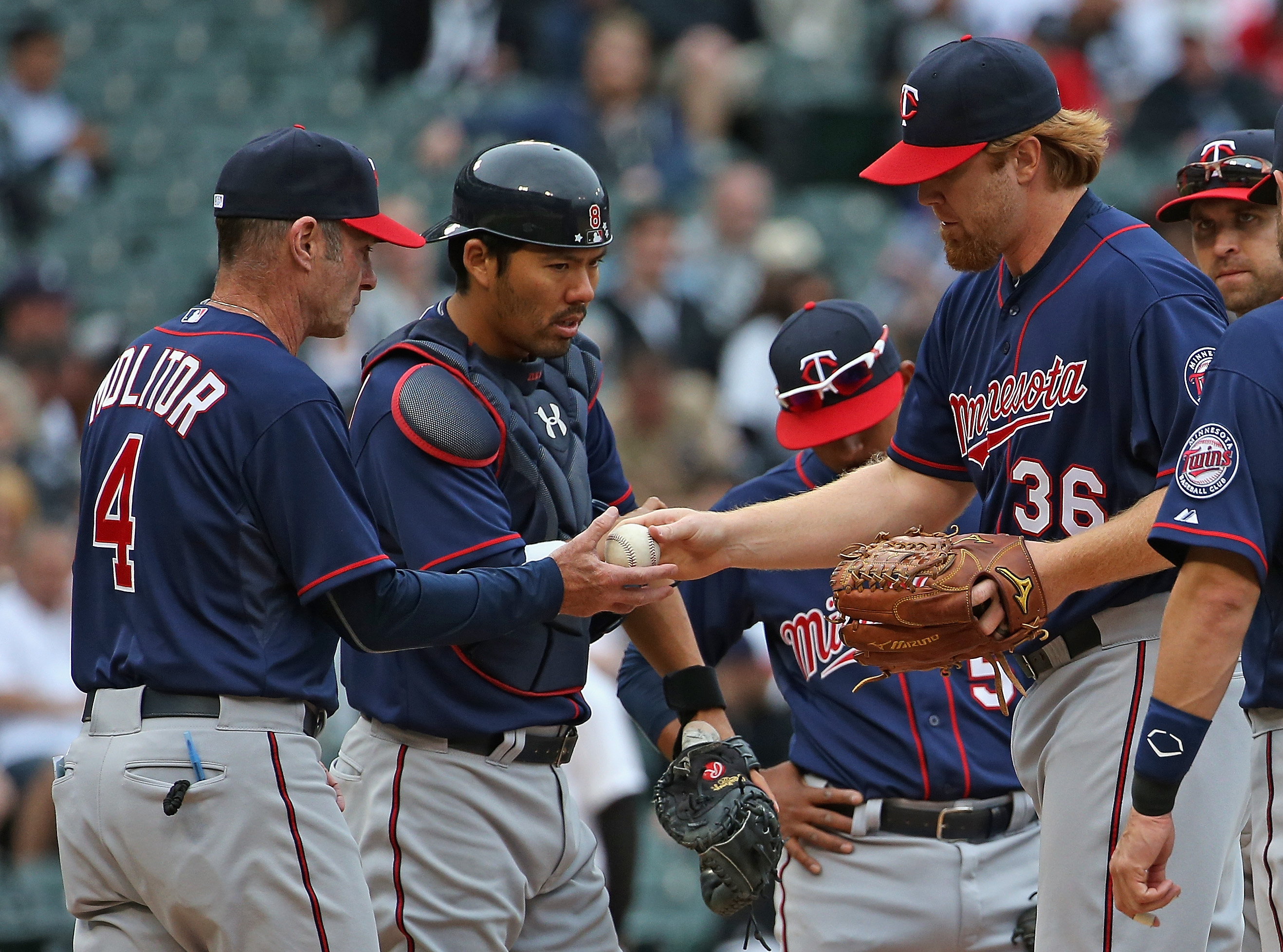April 15, 2015
Don’t act surprised: Twins build bad bullpen, get bad relief pitching
As part of the frustrating decision-making process that led to choosing the older, lower-upside option to fill nearly every up-for-grabs roster spot coming out of spring training the Twins now have a bullpen stocked with marginal big leaguers. To make matters worse their best setup man, Casey Fien, has been hurt and their lone standout reliever, Glen Perkins, continues to be in a role reserved for "save" situations that severely limit his overall usage.
All of which has added up to new manager Paul Molitor turning to an assortment of replacement level-caliber arms and repeatedly watching them fail, often in high-leverage spots. Twins relievers have combined to throw 21 innings with a 5.91 ERA and nearly as many walks (8) as strikeouts (10). Among all MLB teams the Twins' bullpen ranks either worst or second-worst in ERA, xFIP, strikeout rate, strikeout-to-walk ratio, and opponents' batting average.
Assuming that Fien's shoulder issues prove minor he'll soon be taking on a lot of the late-inning setup work that's been going to lesser options and in general the Twins' bullpen isn't as bad as it's looked so far because basically no bullpen is that bad. However, when you bypass better, younger, higher-upside options to give jobs to mediocre, low-upside veterans a bad bullpen is exactly what you get. No one, least of all the Twins, should be surprised by the early results.
This offseason 32-year-old left-hander Brian Duensing was a non-tender candidate because his inability to neutralize right-handers made him ill-suited for a setup role, but the Twins retained him for $2.7 million and kept him in a key role. They also spent $2.2 million on 33-year-old free agent right-hander Tim Stauffer, whose nice-looking raw numbers for the Padres came attached to a 90-mph fastball and included a 4.28 ERA away from MLB's most pitcher-friendly ballpark.
When the Twins signed Blaine Boyer to a minor-league deal in January it seemed like a move made mostly for organizational depth, because he's a 33-year-old journeyman with a 4.63 ERA in the majors and a 5.31 ERA at Triple-A, but he ended up making the team largely on the basis of a half-dozen spring training innings. Another former minor-league signing, 28-year-old journeyman Aaron Thompson, was chosen as the third lefty despite an underwhelming track record.
If healthy Perkins is a good closer and Fien is a decent setup man, but the Twins chose to fill the other five bullpen spots with Duensing, Stauffer, Boyer, Thompson, and Rule 5 pick J.R. Graham. And in creating that seven-man bullpen in which the only pitcher under 30 years old is there via the Rule 5 draft Molitor and the front office passed over several younger, cheaper, higher-upside relievers already in the organization.
Michael Tonkin is 25 years old and has pitched well in a few brief stints with the Twins, posting a 3.26 ERA and 26/9 K/BB ratio in 30 innings while averaging 94 miles per hour with his fastball. He was sent back to Rochester for his third straight season at Triple-A, where Tonkin has a 3.39 ERA and 85/21 K/BB ratio in 80 innings. He's young and cheap, he throws hard and misses bats, and he's fared well at Triple-A and in Minnesota.
Caleb Thielbar spent most of the past two seasons in the Twins' bullpen and pitched well as the third lefty, throwing 94 innings with a 2.59 ERA and 74/30 K/BB ratio. Ryan Pressly also spent much of the past two seasons in the Twins' bullpen, posting a 3.60 ERA in 105 innings. Pressly's secondary numbers were much less impressive, but he averaged 93 miles per hour with his fastball in the majors and has pitched well at Triple-A. They were both demoted to Rochester.
Lester Oliveros was acquired from the Tigers in the Delmon Young trade and missed most of 2013 recovering from elbow surgery. He returned last season to split the year between Double-A and Triple-A, posting a 1.64 ERA with 88 strikeouts and zero homers allowed in 66 innings. At age 27 his upside is limited and Oliveros' control can be iffy, but he throws in the mid-90s and has averaged 11.2 strikeouts per nine innings for his minor-league career.
Using the $5 million they spent on Duensing and Stauffer to acquire better relievers is something the Twins could have done this offseason, but even ignoring that possibility they had no shortage of intriguing, cheap, in-house bullpen options deserving of an opportunity and/or extended stay in the majors. They chose to give roster spots to none of them and the early results are what that flawed decision-making process deserves.
For a sadness- and anger-filled discussion of the Twins' rough opening week, check out the latest "Gleeman and The Geek" episode.


